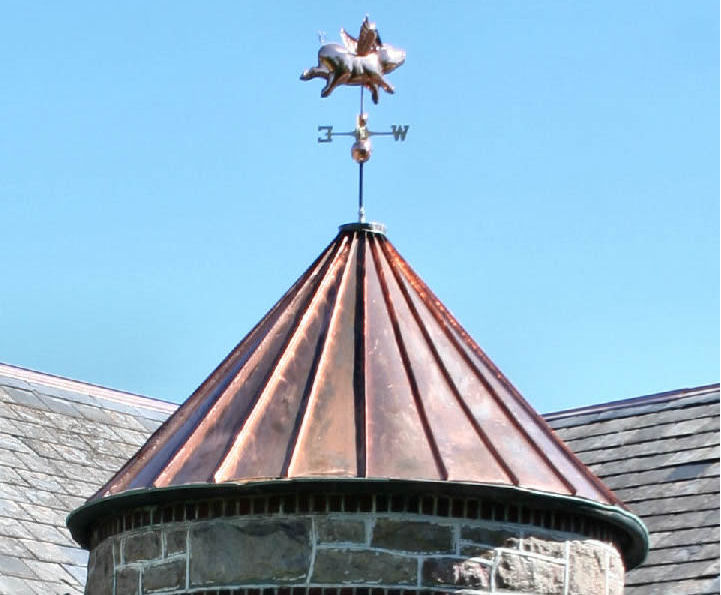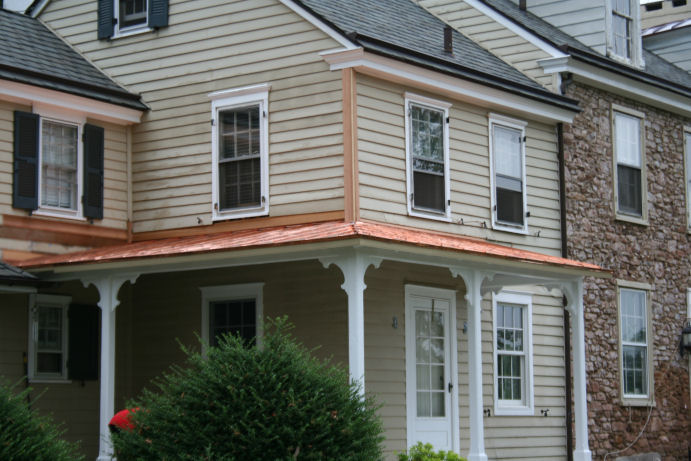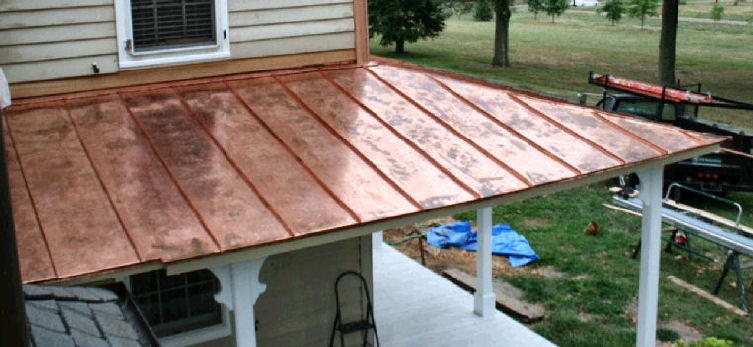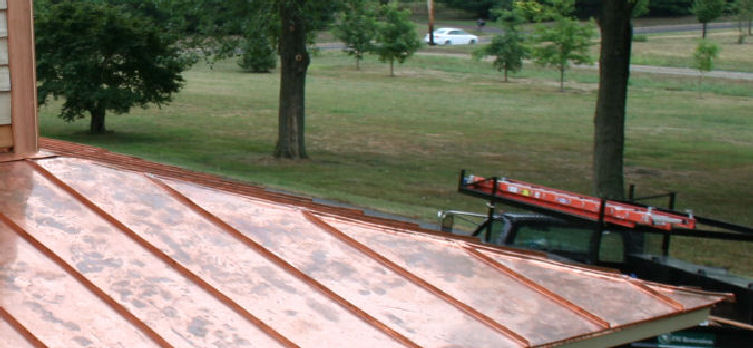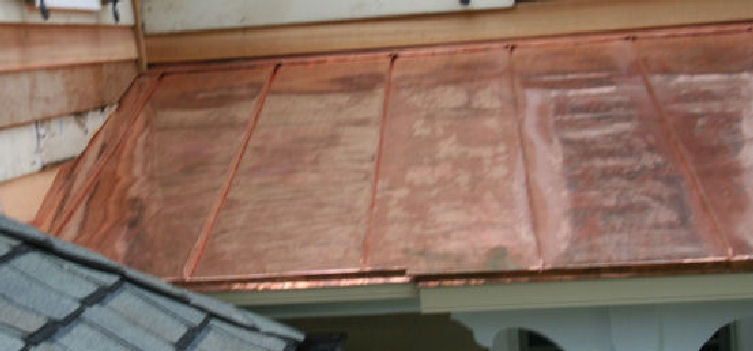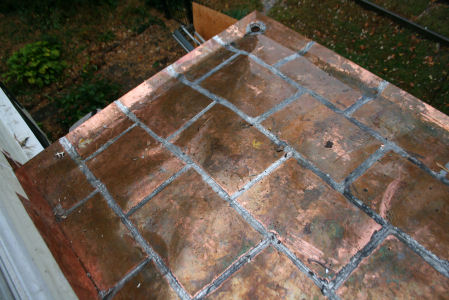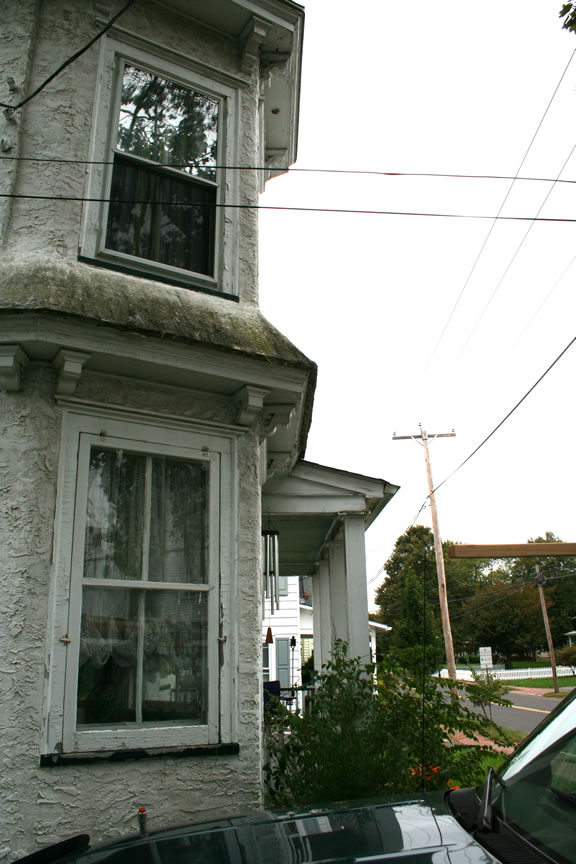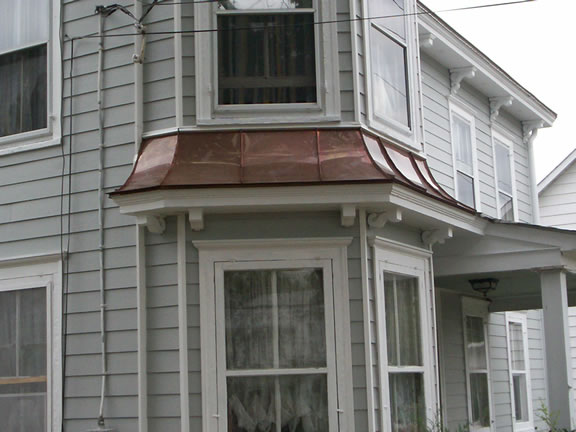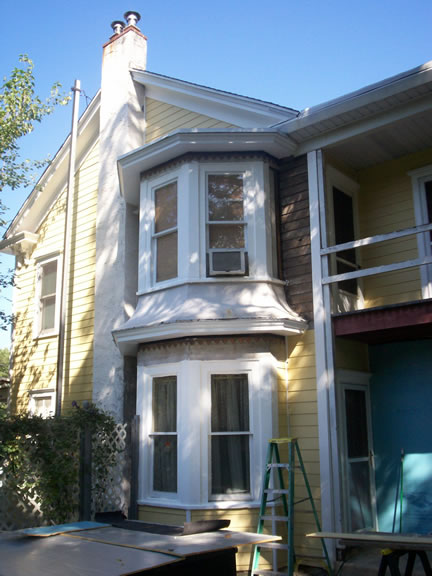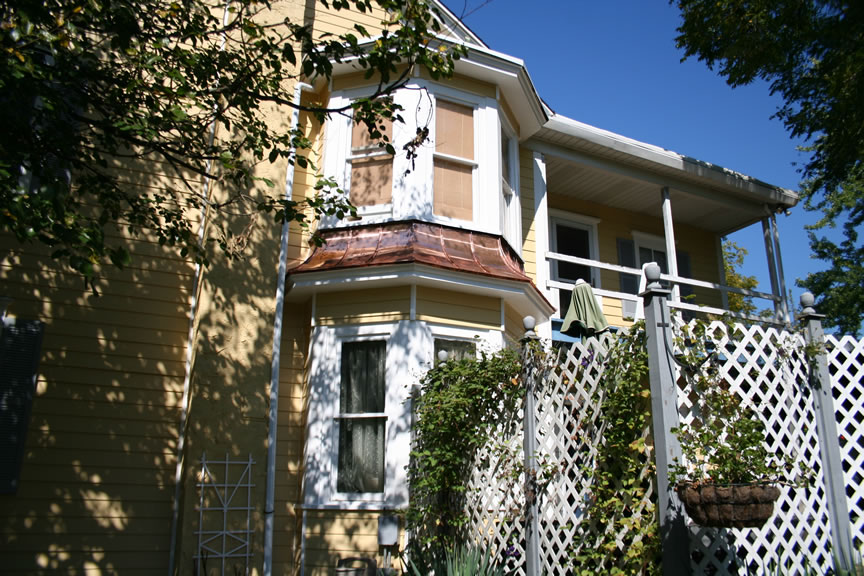
COPPER STANDING SEAM ROOFING |
FLAT SEAMED SOLDERED COPPER ROOFING |
COPPER STANDING SEAMED BAY WINDOWS |
COPPER STANDING SEAM ROOFING |
BEWARE: USE OF COPPER FLASHING ON CEDAR ROOFING |
The newer contemporary Standing Seam methods are fine for shopping centers and commercial cladding, but for older homes that beg for hand fashioned metal, no cookie-cutter commercial metal fabrication will suffice. (Above) Copper Turret installed after tree damaged original Copper Turret in Bethlehem, Pa.
Copper was chosen because of its permanence and lasting beauty. Copper, long known for its anti-microbial qualities, also develops a beautiful patina that protects the metal from sulfides in the atmosphere. Some have over accentuated this phenomena but it is not as prevalent as claimed. Copper is the metal of choice for long lasting metal cladding.
As a general rule, a 3 inch rise per foot slope is the limit for standing seam metal roofing. This job in Newtown, Pa has a nominal 2-1/4 to 2-1/2 inch rise per foot. The small size of the roof planes combined with the negligible amount of possible runoff from adjacent roof areas above allowed for the standing seam option to be a viable one for this installation.
Copper Standing Seam Roofing done in authentic style affords a beauty unsurpassed by any option available in today's roofing marketplace. Copper was used by the affluent in days of old but cost was not the only factor in the choice of copper. As mentioned above, sulfur is an enemy of copper, along with certain tanic acids from wood roof runoff. See our page on cedar roofs and copper flashings. Anthracite coal was used for fuel in heating many of the historic homes and copper was passed up for Terne coated steel flashings. The old world craftsmen knew best and following the tradesmen of yesterday affords knowledge no textbook can offer. Today, few heat with coal and copper is used to replace the old ferrous metals on natural slate and tile roofs of yesterday. Copper is the metal of choice for the discerning property owner and old world craftsmanship is imperative as today's marketplace of ideas is dominated by contemporary thinking that the installers of today often follow to ends that are not flattering. "I am very pleased with the job they did. Work was completed on time at an excellent price and with close Attention to detail. They also Specialize in Slate Roof repairs as well as other Old House type restorations.If looking for quality craftsmanship with unbeatable prices, I Highly recommend this company." -----MS - Newtown, Pa.
|
|||||||||||||||||||||||
Galvanized Standing Seam Roofing
offers an affordable alternative to copper and terne.
"Tinknocker" Tin Roofing
